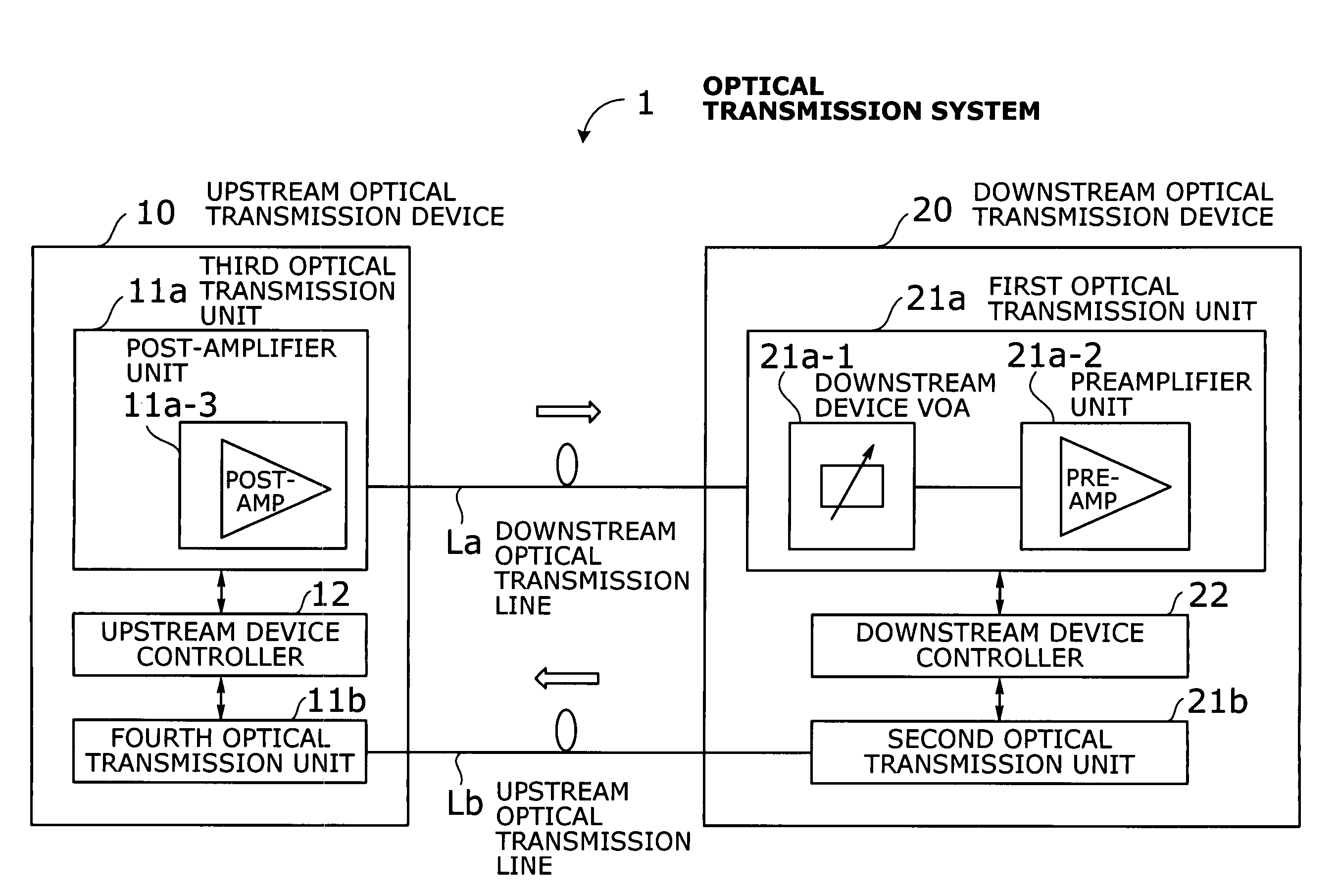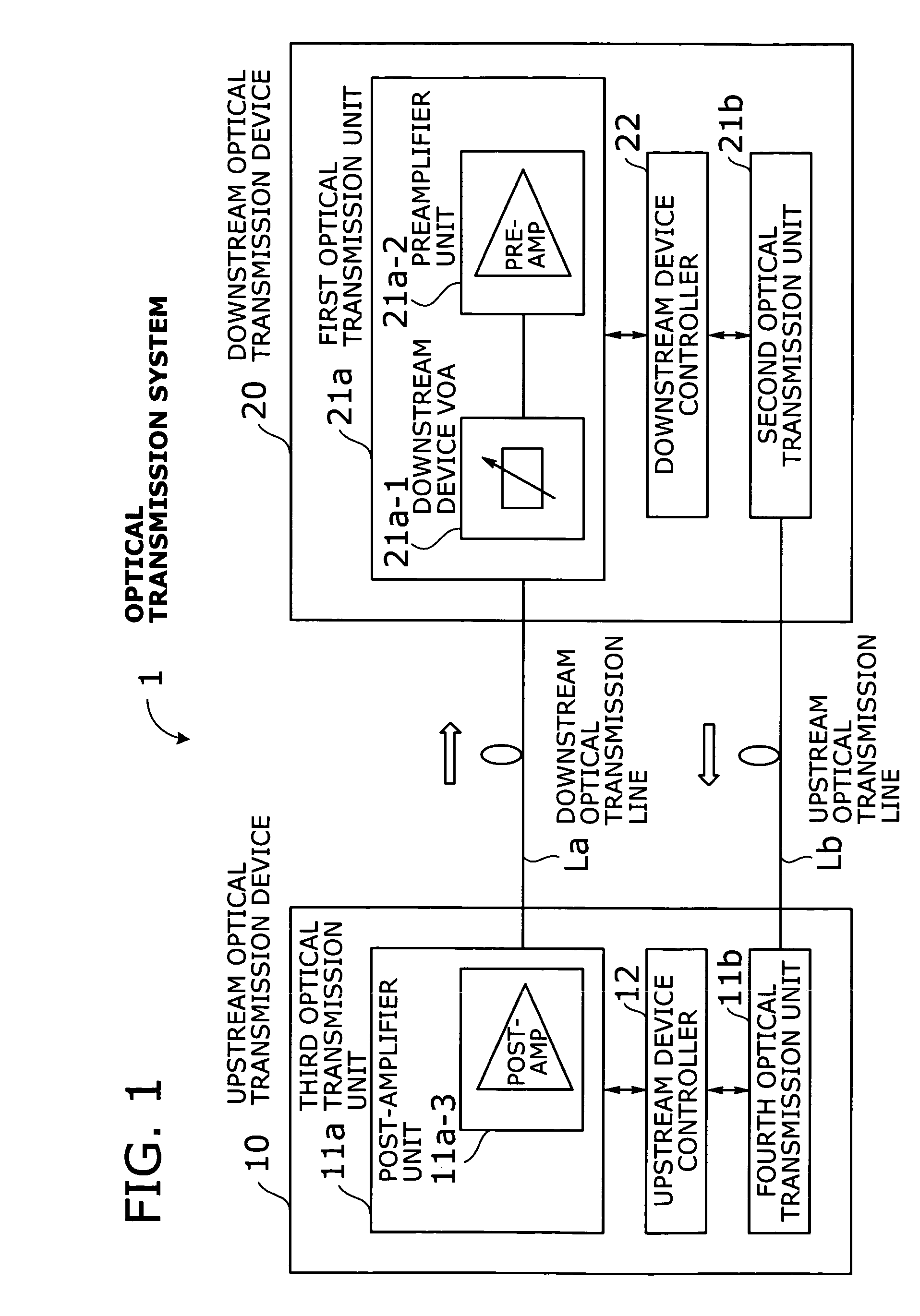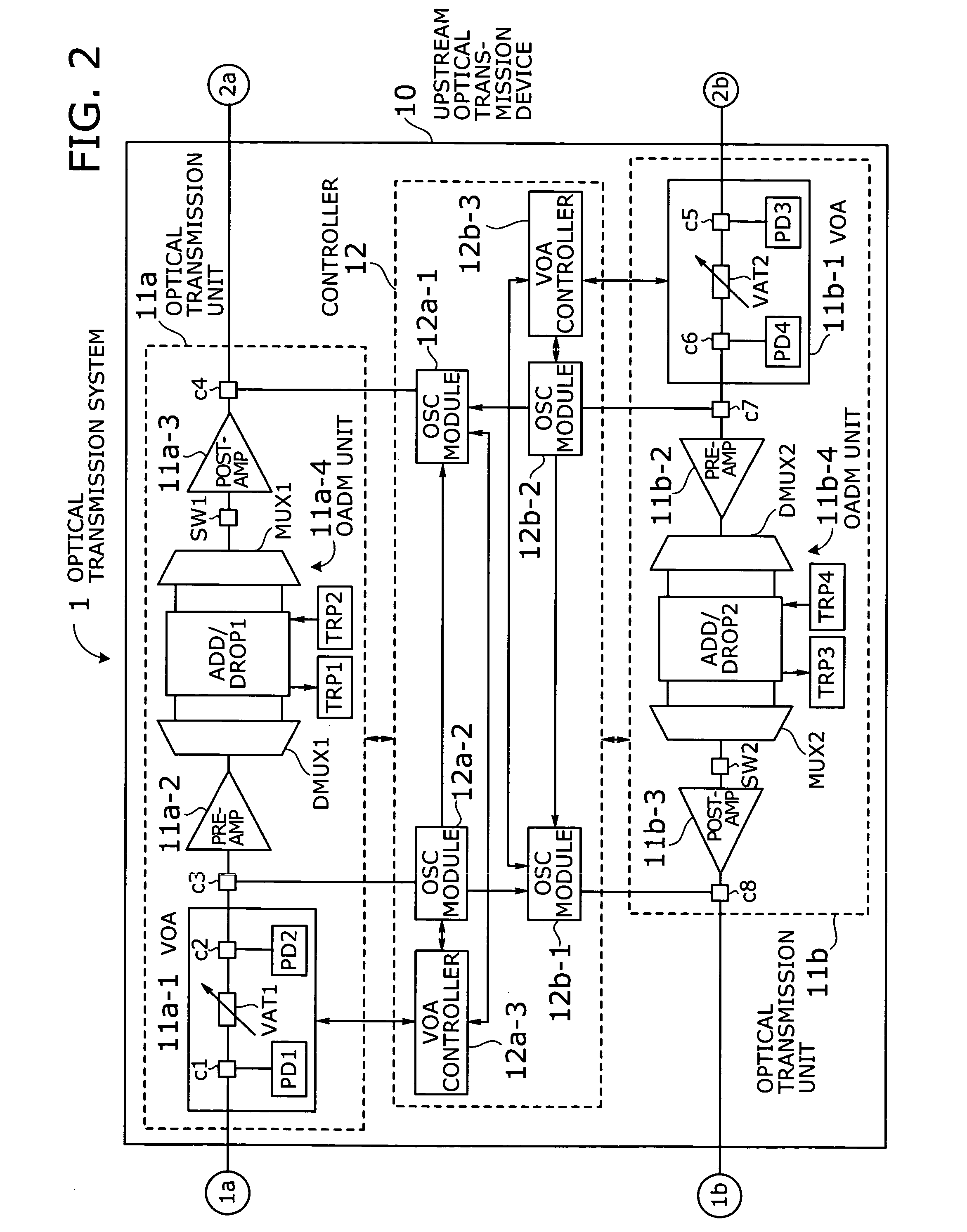Optical transmission system with automatic signal level adjustment and startup functions
a technology of automatic signal level adjustment and optical transmission system, applied in optical transmission, wavelength-division multiplex system, multi-channel communication, etc., can solve problems such as inability to adjust attenuator level, and inability to operate error-free tasks. to achieve the effect of convenient operation and maintenan
- Summary
- Abstract
- Description
- Claims
- Application Information
AI Technical Summary
Benefits of technology
Problems solved by technology
Method used
Image
Examples
first embodiment
[0045]This section describes a more specific structure of the optical transmission system 1 according to the present invention. The following explanation, however, assumes a system with an intermediate repeater device, which is not shown in the simplified system of FIG. 1.
[0046]FIGS. 2 to 4 show the structure of an optical transmission system 1 according to a first embodiment of the present invention. Specifically, FIG. 2 shows an upstream optical transmission device 10 (referred to as “transmission device 10” where appropriate). FIG. 3 shows an intermediate optical transmission device 30 (referred to as “repeater device 30” where appropriate). FIG. 4 shows a downstream optical transmission device 20 (referred to as “transmission device 20” where appropriate).
[0047]Note that the terms “upstream” and “downstream” are used in a relative sense; that is, those labels of optical transmission devices depend on their relative locations. Think of, for example, two devices illustrated in a d...
second embodiment
[0107]In this section, we will describe an automatic startup process according to a second embodiment of the present invention, in which a VOA is attached to the output stage of each optical amplifier. FIGS. 9 to 11 show the structure of an optical transmission system 2 according to the second embodiment. Specifically, FIG. 9 is a block diagram of an upstream optical transmission device 40 (referred to as “transmission device 40” where appropriate). FIG. 10 is a block diagram of an intermediate optical transmission device 60 (referred to as “repeater device 60” where appropriate). FIG. 11 is a block diagram of a downstream optical transmission device50 (referred to as “transmission device 50” where appropriate).
[0108]Unlike the first embodiment, the optical transmission system 2 employs a VOA at the output stage of (as opposed to at the front end of) each post-amplifier, inline amplifier, and preamplifier. In addition, the automatic startup process of this system 2 is designed not t...
third embodiment
[0160]This section describes a system with automatic startup functions according to a third embodiment of the present invention. The third embodiment differs from the preceding two embodiments in that the transmission line loss of each section between nodes is calculated for use in startup processing that follows. The system of the third embodiment has the same structure as what we have described in FIGS. 2 to 4, except that the optical switch placed before every post-amplifier can be eliminated.
[0161]FIG. 17 is a flowchart of an automatic startup process according to the third embodiment of the invention. This process goes as follows:
[0162](S71a) A service engineer inserts a preamplifier unit 21a-2 to the transmission device 20. This event triggers the controller 22 to begin startup processing. Note that OSC signals have to be available at this stage.
[0163](S71b) The controller 22 examines whether OSC signals and main signals are available on the receiving transmission line. This t...
PUM
 Login to View More
Login to View More Abstract
Description
Claims
Application Information
 Login to View More
Login to View More - R&D
- Intellectual Property
- Life Sciences
- Materials
- Tech Scout
- Unparalleled Data Quality
- Higher Quality Content
- 60% Fewer Hallucinations
Browse by: Latest US Patents, China's latest patents, Technical Efficacy Thesaurus, Application Domain, Technology Topic, Popular Technical Reports.
© 2025 PatSnap. All rights reserved.Legal|Privacy policy|Modern Slavery Act Transparency Statement|Sitemap|About US| Contact US: help@patsnap.com



